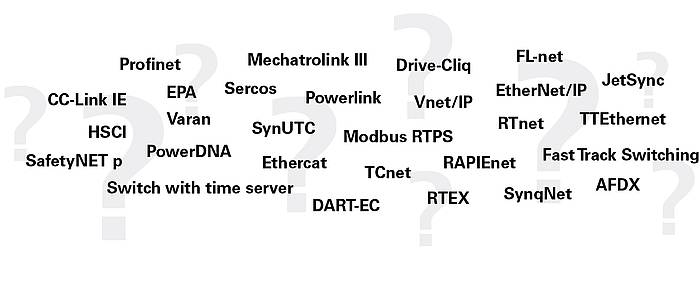Real-time Ethernet
Without precise specifications, Ethernet cannot satisfy real-time demands and efficiency requirements in automation engineering. Thus, appropriate transmission procedures must be defined which make Ethernet efficient and compatible with real-time requirements. The diversity of real-time Ethernet solutions available on the market does not make it easy to keep perspective. Even specialists sometimes find it difficult to fully evaluate and compare how different real-time Ethernet solutions work and what effects they produce. In the end, an objective comparison of the solutions can only be made when actual application scenarios are available. What is important is to understand the basic principles of different real-time Ethernet solutions and how they work.
 |
All standardized real-time Ethernet solutions are listed in IEC 61784 Part 2; and each of the protocol specifications for real-time Ethernet solutions is contained in IEC 61158 series of standards. The different types of technology described there have Ethernet IEEE 802.3 in common as their transmission medium and protocol. This technology covers the whole plant and process automation sector in terms of how it can be applied. When it comes to performance and real-time, the greatest demands are placed on bus systems which are used in motion control applications.
Comparison of real-time requirement categories
| Cycle times | Synchronization required | ||
|---|---|---|---|
Standard Ethernet communication | Not cyclical | Not synchronized | |
Positioning drives, frequency converters, I/O periphery | 4 – 10 ms | > 4 ms | |
Drives with peripherals signal processing, high-speed I/O periphery | 250 µs – 4 ms | < 1 µs | |
Central drive concepts, highly dynamic measurement applications | 31,25 µs – 125 µs | < 1 µs |